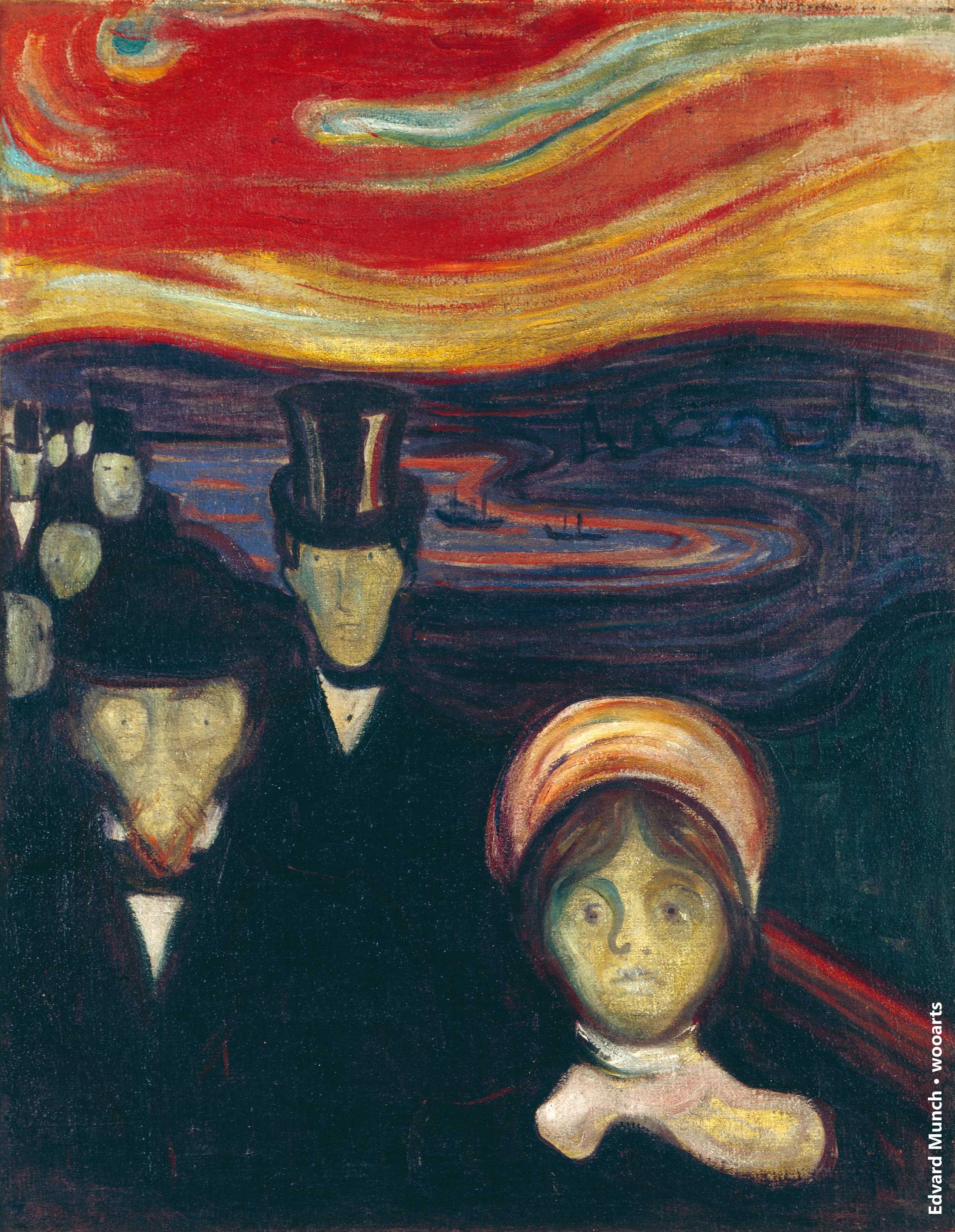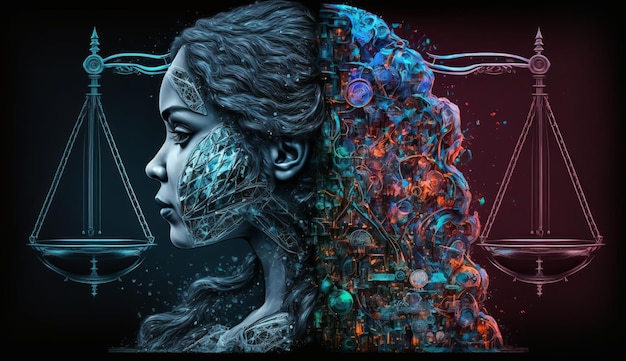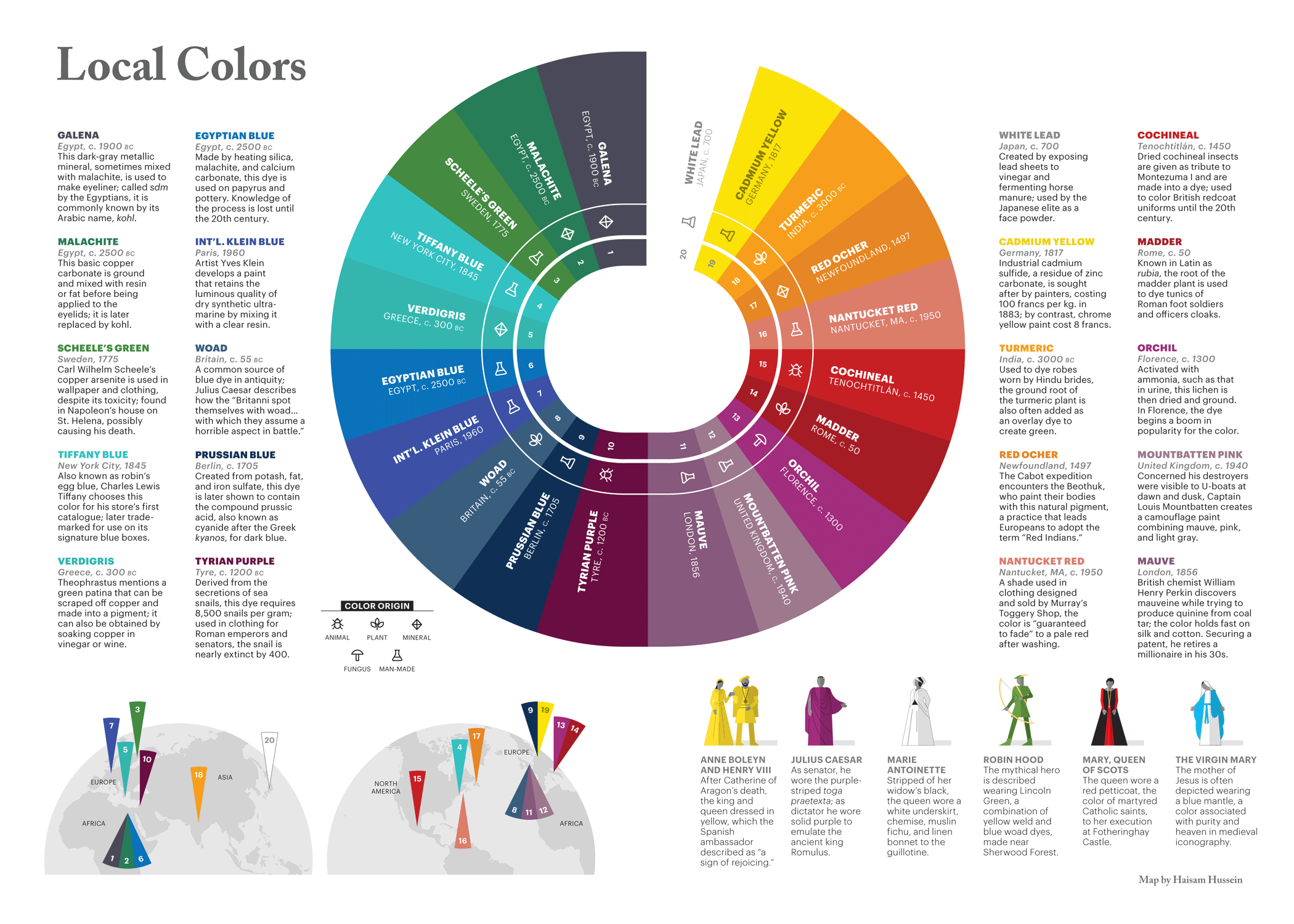Edvard Munch, the renowned Norwegian painter, is celebrated for his profound exploration of human emotions through his artistic creations. Best known for iconic works like “The Scream,” Munch’s art delves deep into themes of loneliness, love, and existential angst. One remarkable piece, “Two Human Beings (The Lonely Ones),” stands as a testament to Munch’s fascination with human connection and isolation, encapsulating the essence of his artistic journey. Currently featured in the “Munch exhibition Harvard,” this artwork reveals his unique style and technique cultivated over 40 years. Through Munch’s lens, we gain insight into the intricate portrayal of relationships and the palpable feeling of loneliness in art, underscoring his lasting impact on the artistic community.
The artistic legacy of Edvard Munch is rooted in his ability to convey complex emotions through visual storytelling. Often regarded as a pioneer of expressionism, Munch’s oeuvre includes not only famous paintings but also an extensive collection of prints and woodblock works that capture the duality of human experience. His iconic representation of a couple by the shore in “Two Human Beings” reflects a deep contemplation of companionship and solitude. The ongoing “Munch exhibition at Harvard” highlights these themes, allowing viewers to engage with the intricacies of his work. Through the examination of Munch’s art, we can explore broader concepts of intimacy and the nuanced connections between individuals, demonstrating how loneliness is portrayed and interpreted in various forms.
Exploring Edvard Munch’s Fascination with Loneliness
Edvard Munch’s repeated exploration of themes related to loneliness is poignantly encapsulated in his work, “Two Human Beings (The Lonely Ones).” This motif, featuring a man and a woman standing apart while gazing at the sea, is an evocative representation of emotional isolation. Munch’s ability to highlight the separation of these figures, even while they are physically present, transcends the boundaries of mere visual art; it speaks to the universal experience of loneliness that exists alongside companionship. This blending of isolation and connection has been a significant feature of Munch’s art, influencing his broader oeuvre and further resonating with viewers who find solace and reflection in his imagery.
Throughout Munch’s career, he continued to reflect on solitude, not as a bleak existence but as a complex emotional landscape. Even in the presence of another, the figures in his artwork often evoke a sense of separation that amplifies the viewer’s understanding of human relationships. As Munch multiple revisited “Two Human Beings,” he delved into the varying degrees of loneliness that can exist among individuals. This nuanced approach allows viewers to interpret feelings of companionship intertwined with personal solitude—a duality that speaks to the human condition.
The Evolution of Munch’s Printmaking Techniques
Munch’s innovation in printmaking significantly contributed to the evolution of his thematic explorations in works like “Two Human Beings.” He utilized a distinct jigsaw method, whereby he carved each part of the composition onto separate wooden blocks. This approach not only allowed for unlimited color combinations but also the integration of the male figure into the landscape while rendering the female figure more isolated. By deconstructing and reassembling his compositions, Munch embraced a unique kinetic energy that resonates throughout his art. The process of printing provided him with greater freedom to experiment with bold color selections and dynamic compositions, which echoed his explorative spirit throughout his artistic career.
The transformation of Munch’s approach from painting to printmaking is evident in the various iterations of “Two Human Beings.” Each printing presents an exploration of light, texture, and form, contributing to a more sensory experience of the theme. Rather than being mere reproductions, Munch’s prints showcased a continual dialogue with his original paintings, reflecting his evolution as an artist. This method of engaging with the same theme across different mediums encapsulates Munch’s deeper artistic inquiry into loneliness and companionship, ensuring that the viewer experiences the full spectrum of emotion presented by these two figures.
The Literary and Psychological Context of Munch’s Work
Munch’s artistic focus on themes of isolation and emotional turmoil is often paralleled in literature, where the complexities of human relationships and psychological strife are explored. His work resonates with literary themes of existentialism and the human spirit’s fragility, offering a visual counterpart to the literary discussions of the era. Just as writers of the time grappled with the intricacies of human emotion, Munch’s portrayals of solitude illustrate a similar depth of feeling, engaging viewers in a dialogue about loneliness and connection.
Furthermore, Munch’s psychological struggles and his ability to articulate these experiences through art add layers to his paintings that connect deeply with audiences. Engaging with his work, viewers can see how personal experiences shape his artistic expression, providing insight not only into Munch’s psyche but also into broader human experiences. The way Munch portrays these varied emotions allows us to reflect on our own themes of companionship and isolation, fostering a richer understanding of how loneliness can co-exist with connection.
Munch’s Artistic Legacy and Modern Interpretations
Edvard Munch’s legacy continues to resonate with contemporary audiences, with exhibitions like “Edvard Munch: Technically Speaking” at the Harvard Art Museums illuminating the profound impact of his artistic explorations. By showcasing over 70 works, the exhibition not only highlights Munch’s varied techniques but also encourages a deeper understanding of the emotional landscapes he navigated throughout his career. This modern perspective invites viewers to move beyond the traditional narrative of the tortured artist, instead framing Munch as a complex figure who engaged with themes of connection and emotion, making his work timeless.
Modern interpretations of Munch’s works can lead to a reconsideration of themes like loneliness, looking at his compositions with fresh eyes that appreciate his innovative techniques and emotional depth. Today’s audiences can recognize that although Munch faced profound psychological struggles, his art serves as a powerful medium for exploring underlying themes of companionship amidst solitude. In navigating such emotions, Munch has solidified his place in the pantheon of great artists, where his ability to articulate complex human experiences through paint continues to inspire and resonate.
The Impact of Munch’s Color Palette Choices
Munch’s deliberate color palette choices played an integral role in his ability to convey complex emotions in his artwork, particularly in “Two Human Beings.” The shifts in color from somber tones to vibrant hues reflect varying emotional states and add layers of meaning to the figures’ posture and expressions. Munch’s exploration of color not only enhanced the visual appeal of his artworks but also served as a direct channel for emotional communication, allowing viewers to engage intimately with the underlying themes.
By employing a range of colors, from bold, vivid contrasts to subtle, monochromatic schemes, Munch orchestrated a dynamic interplay between figures and their environments. This manipulation of color facilitates a deeper emotional connection, as it evokes feelings that mirror the spectrums of loneliness and companionship represented in his art. Analyzing Munch’s palette choices enriches our understanding of his artistic intentions and illustrates the profound emotional reverberations that color can invoke.
Munch’s Approach to Imperfection in Art
Munch embraced imperfection in his artistic process, a philosophy that becomes particularly visible in pieces like “Two Human Beings.” The exposed brushstrokes, unfinished details, and visible sketch lines speak volumes about his artistic intent—reflecting a departure from the traditional notions of perfection in art. Instead of concealing the imperfections, Munch highlighted them as expressions of authenticity, inviting viewers to engage with the artwork in a more personal and honest way.
This acceptance of flaws not only challenged contemporary standards but also provided a more immersive experience for the viewer. By revealing the raw, unpolished elements of his paintings, Munch created a sense of intimacy and vulnerability in his work. The idea that an ‘imperfect’ artwork can convey deeper meaning echoes in the emotional complexities of “Two Human Beings,” encouraging appreciation for artistry that celebrates the human condition, in all its beauty and imperfections.
The Role of Nature in Munch’s Artistic Expression
Nature plays a pivotal role in Munch’s artistic narrative, particularly in “Two Human Beings,” where the shoreline setting enhances the emotional weight of the figures’ solitude. The vastness of the sea and the rocky landscape embody feelings of isolation, serving as a backdrop that intensifies the emotional connection between the figures and their environment. Munch often used natural settings to reflect inner emotional landscapes, allowing viewers to perceive the profound relationships between human beings and their surroundings.
Furthermore, the natural elements woven into Munch’s narrative suggest a deeper symbolic connection. The way the figures interact with the landscape around them prompts reflections on humanity’s place within nature, highlighting the interconnectedness of all beings. Munch’s depictions steer the audience toward themes of reflection and contemplation, illustrating how nature can evoke both solitude and companionship, thus enhancing the depth of his celebrated works.
The Introspection Behind Munch’s Recurrent Themes
Munch’s enduring themes reflect not only his personal experiences but also universal truths about human existence. His frequent revisitation of motifs like that found in “Two Human Beings” reveals deep introspection, illuminating the artist’s ongoing quest to understand complex emotional states. The variations in each painting interpretation depict a continued exploration of his inner world, showcasing Munch’s commitment to wrestling with feelings of loneliness and connection over time.
This introspection prompts important questions about the nature of relationships and emotional experiences, encouraging viewers to engage with their own feelings of isolation or companionship. Each iteration within his body of work not only encapsulates personal discovery but also acts as an invitation for audiences to reflect on their relationships with others and the self. Munch’s art, therefore, serves as a profound mirror reflecting the intricacies of human emotion and connection.
Munch’s Influence on Contemporary Art and Culture
The reach of Edvard Munch’s influence extends beyond his lifetime, penetrating the realms of contemporary art and culture. Artists today often draw inspiration from Munch’s innovative techniques and thematic explorations, particularly in the realms of emotional expression and abstraction. His ability to convey psychological depth through simple yet profound motifs resonates with modern creators seeking to explore similar themes of loneliness and emotional disquiet in their work.
Moreover, Munch’s cultural legacy continues through exhibitions and scholarly discussions that examine his artistic innovations and thematic elements. As contemporary artists grapple with the complexities of human emotion, Munch’s explorative spirit fosters a renewed dialogue around themes of isolation, connection, and societal reflection. This enduring relevance ensures that Munch remains a central figure in art history, shaping how emotional experiences are expressed visually.
Frequently Asked Questions
What is the significance of Edvard Munch’s painting ‘Two Human Beings’?
Edvard Munch’s painting ‘Two Human Beings (The Lonely Ones)’ is significant as it reflects his deep exploration of themes such as loneliness and companionship. Created between 1906 and 1908, Munch revisited this motif over 40 years, which symbolizes not just isolation, but also a profound connection between two figures positioned at the shore, inviting viewers to interpret their relationship through various emotional lenses.
How does Edvard Munch represent loneliness in his art?
In Munch’s art, particularly in ‘Two Human Beings,’ loneliness is represented through the separation of figures gazing into the distance, symbolizing isolation even in proximity. However, interpretations of Munch’s work suggest that this loneliness can also convey companionship and contemplation, challenging the singular narrative of isolation.
What can visitors expect to see at the Munch exhibition at Harvard?
Visitors to the ‘Edvard Munch: Technically Speaking’ exhibition at Harvard can expect to see a diverse collection of 70 works, including various iterations of ‘Two Human Beings.’ The exhibition explores Munch’s artistic process and the techniques he used, showcasing the evolution of his themes through paintings and prints, emphasizing the dynamism in his work.
How did Edvard Munch influence printmaking through ‘Two Human Beings’?
Edvard Munch influenced printmaking through ‘Two Human Beings’ by employing innovative techniques, such as his jigsaw method of carving woodblocks. This allowed him to experiment with color and composition, demonstrating the interconnectedness of his painting and printmaking practices over his artistic career.
What themes does Edvard Munch explore in ‘Two Human Beings’?
In ‘Two Human Beings,’ Edvard Munch explores themes of loneliness, companionship, and the emotional complexity of human relationships. The work invites viewers to reflect on the tension between isolation and connection, as well as the existential reflections evoked by the figures’ stance by the shore.
Why is Edvard Munch considered a significant figure in Modernism?
Edvard Munch is considered a significant figure in Modernism due to his innovative approach to painting and printmaking, as well as his ability to convey deep psychological and emotional themes in his work. His iconic pieces, such as ‘The Scream,’ exemplify the modern human experience, making him a pivotal artist in the transition to modern art.
How has Edvard Munch’s art changed over time?
Edvard Munch’s art changed over time by reflecting his continuous engagement with recurring motifs, such as ‘Two Human Beings.’ His evolution can be seen in the varying techniques, color palettes, and compositions he employed, showcasing his growth as an artist and the shifting interpretations of his themes throughout his career.
What can be learned about Edvard Munch’s artistic process through his works?
Edvard Munch’s artistic process can be understood as a constant exploration of emotional themes through various techniques. His works, including ‘Two Human Beings,’ illustrate how he experimented with color, form, and medium, revealing his approach to art as a dynamic dialogue between different iterations and interpretations.
What role did imperfections play in Edvard Munch’s art?
Imperfections played a crucial role in Edvard Munch’s art, as he embraced flaws and unfinished elements within his works. In ‘Two Human Beings,’ the visible sketch lines and exposed canvas serve to enhance the emotional resonance of the piece, challenging conventional notions of perfection in art and emphasizing authenticity.
What psychological themes are associated with Edvard Munch’s works?
Psychological themes associated with Edvard Munch’s works, particularly ‘Two Human Beings,’ include existential dread, loneliness, and the complexity of human emotions. Munch’s exploration of these themes enables viewers to connect with the deeper narratives of the human experience, extending beyond mere depiction to evoke emotional responses.
| Key Points | Details |
|---|---|
| Artist | Edvard Munch (1863-1944) |
| Exhibition | ‘Edvard Munch: Technically Speaking’ at Harvard Art Museums |
| Featured Artwork | Two Human Beings (The Lonely Ones), 1906–8 |
| Artistic Techniques | Explored blending painting and printmaking techniques; employed vibrant colors and some unrefined techniques to generate emotional resonance. |
| Themes | Explores companionship and contemplation amid feelings of isolation, challenging traditional interpretations of loneliness. |
| Innovation in Printmaking | Utilized jigsaw methods in woodblock printing, allowing for varied color applications and depicting male and female figures distinctively. |
| Munch’s Legacy | A key figure in Modernism, known for ‘The Scream,’ influenced the portrayal of human emotions in art through technique and form. |
| Exhibition Duration | On display until July 27, 2025. |
Summary
Edvard Munch remains a vital figure in the world of art, particularly recognized for his profound exploration of human emotions and relationships. His iconic work, ‘Two Human Beings (The Lonely Ones),’ serves as a poignant reflection on the nature of connection and isolation, emphasizing that even in solitude, one can find companionship in shared landscapes and colors. The ongoing exhibition, ‘Edvard Munch: Technically Speaking’ at Harvard Art Museums, showcases not only Munch’s innovative techniques in both painting and printmaking but also delves deeper into the continuous evolution of his artistic narrative over 40 years. Munch’s ability to challenge conventional interpretations and convey complex emotions through his art ensures his relevance and impact continue to resonate with audiences today.



